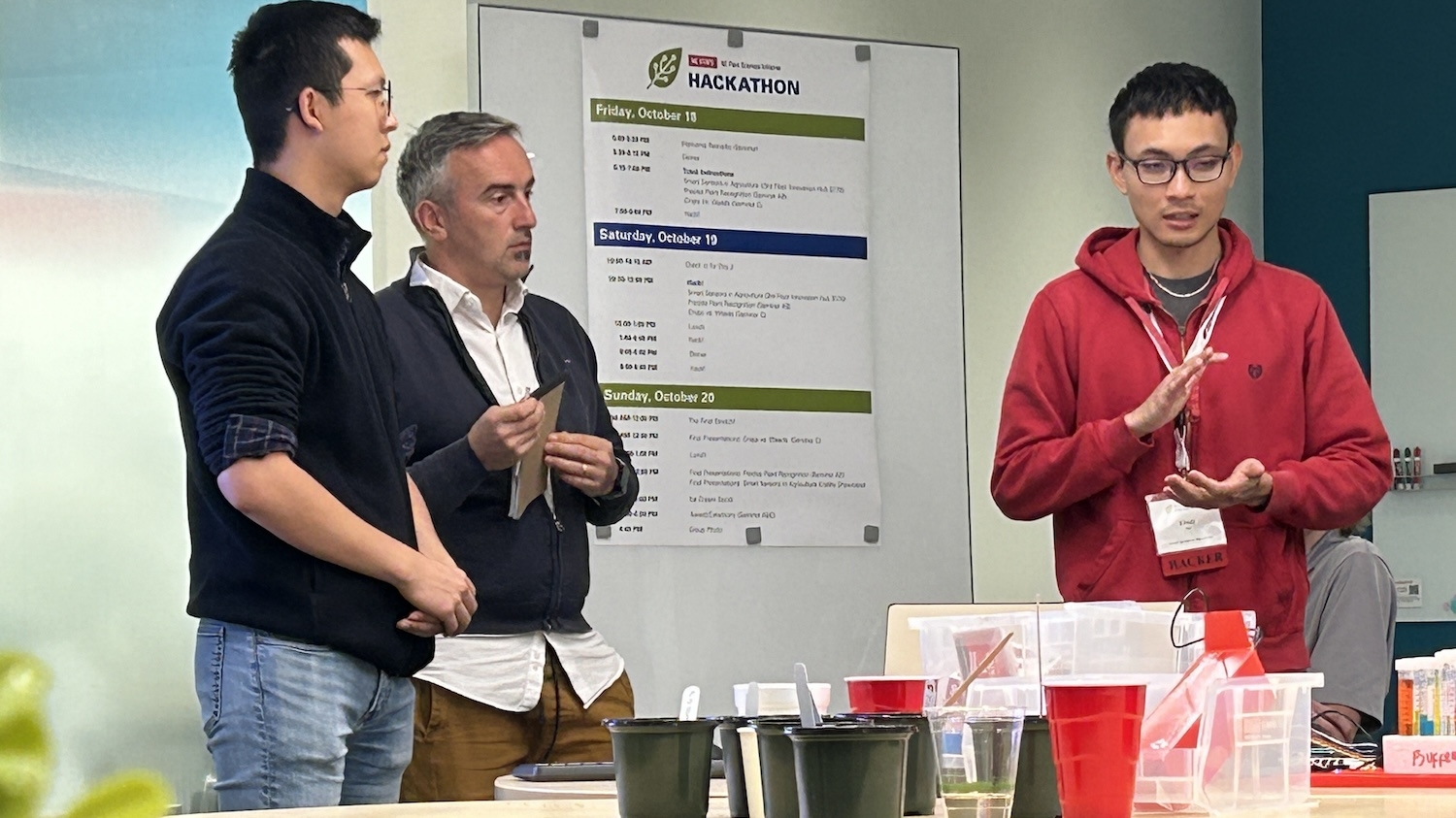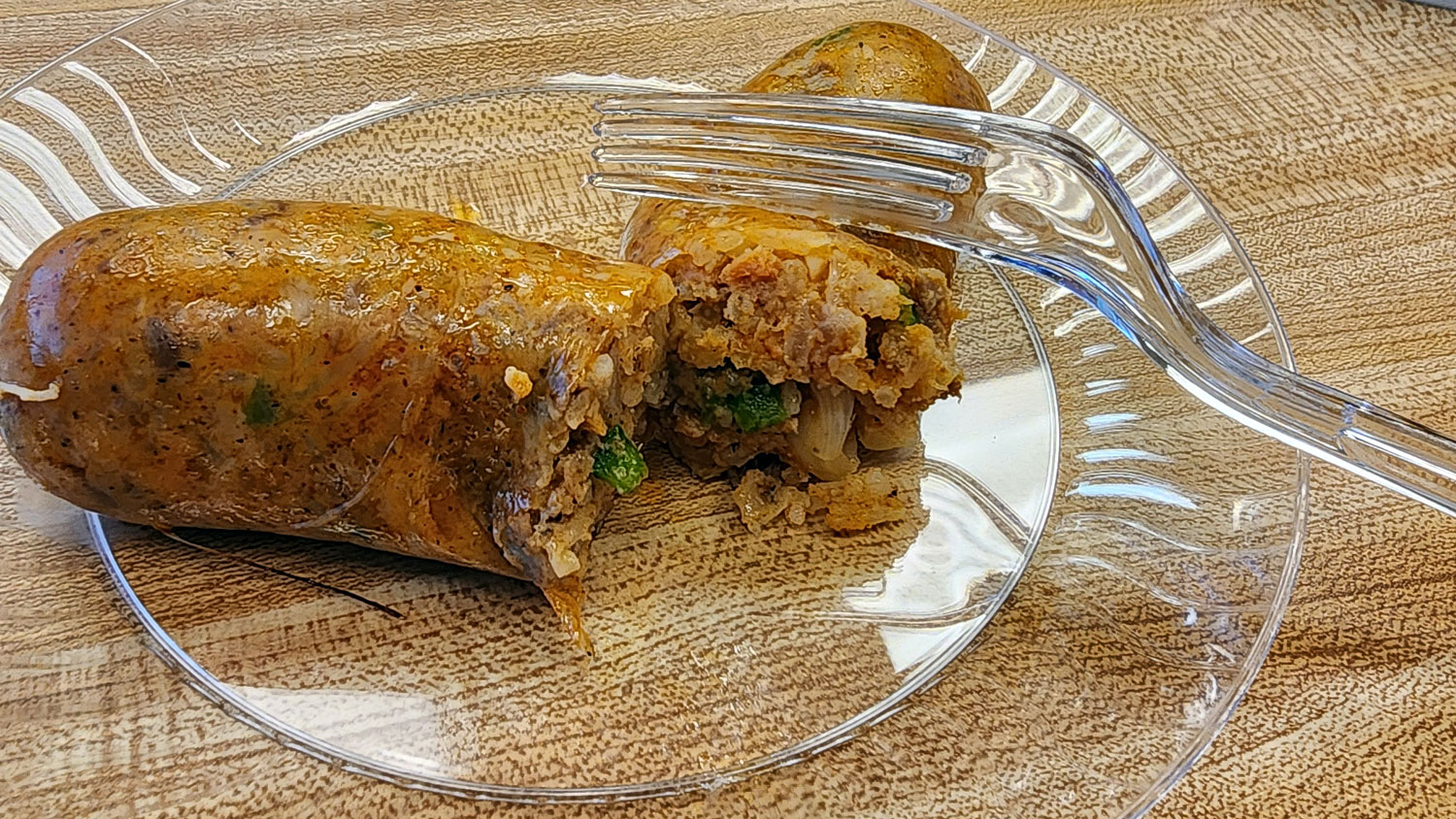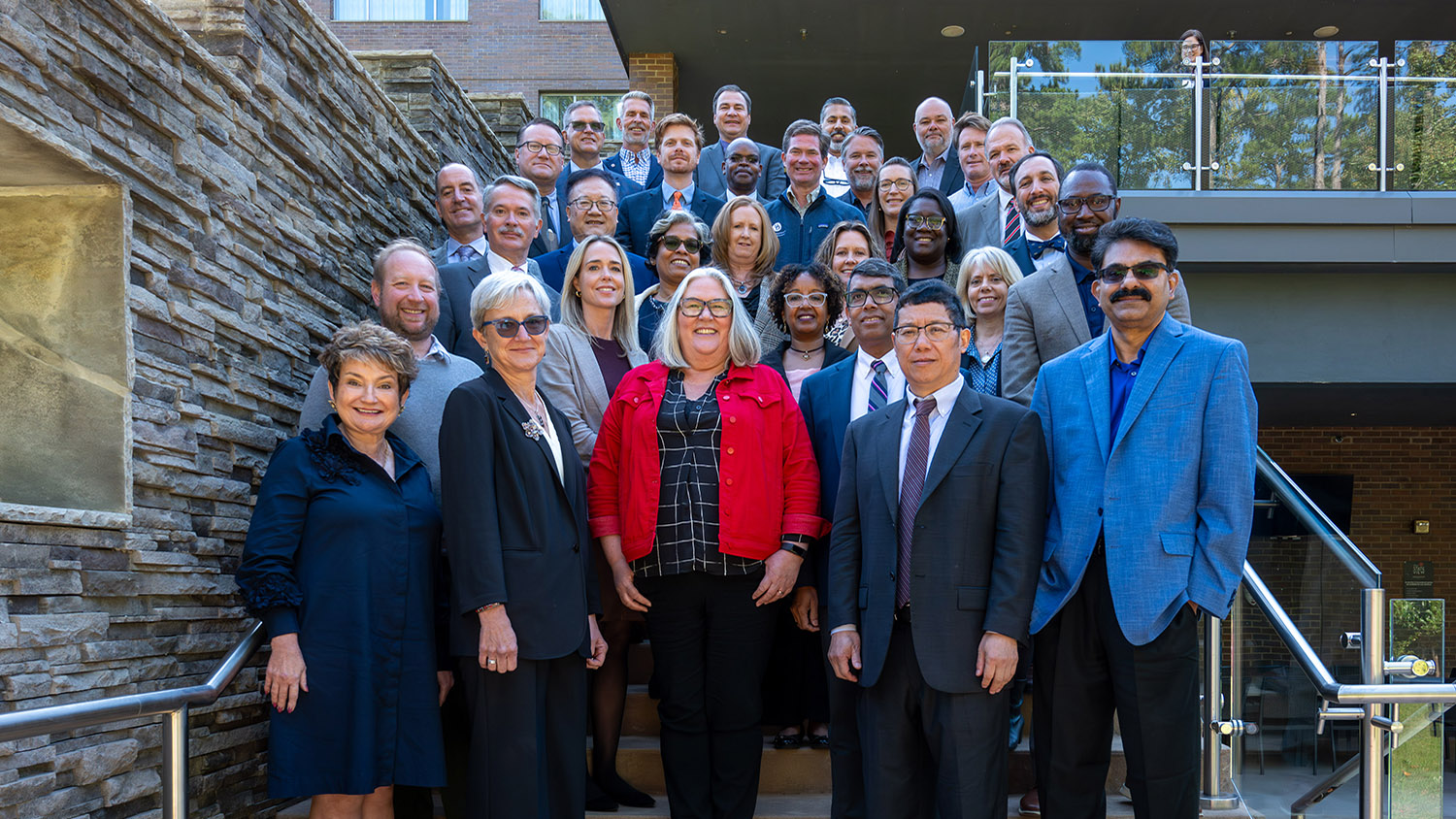College Profile: Sarah Ash
CALS nutrition professor Sarah Ash leads students on a journey of critical reflection.
Dr. Sarah Ash, professor of nutrition in the Food, Bioprocessing and Nutrition Sciences Department in the College of Agriculture and Life Sciences, teaches her students how to deal. Or, rather, DEAL – describe, examine and articulate learning – using the critical reflection model that she and colleagues have developed.
“Critical thinking is an approach that resonates with me. It isn’t just about teaching students the material, but teaching them to think – and to write,” says Ash, whose career has been focused on teaching. “I am an example of someone who was able to get tenured and promoted based on the scholarly work I do in teaching,” she says.
Ash’s scholarship has revolved around the development of the DEAL reflection model. “I got interested in service learning — how people come together to address problems and the academic concepts that you are applying in the community. A key element of service learning is you need to have a mechanism for supporting students in articulating what they’ve learned,” she says. “So reflection is a key element in service learning.”
With co-author Patti Clayton, a former service-learning coordinator at N.C. State, and, she says, “significant input from students across a number of years,” Ash has presented the model in a publication called Learning Though Critical Reflection: A Tutorial for Service-Learning Students.
“It’s a critical reflection framework that guides the students. It’s grounded in educational theory, and it’s been received very positively,” Ash says.
“A challenge in reflection is that when you ask students, ‘What did you learn?’ you often don’t get much beyond a recitation of facts,” she says. “And when you put students in unfamiliar situations, without an effective structure for guiding their thinking about it, you may find that the experience only reinforces inappropriate assumptions that they bring to it.
“The model helps them connect their experiences to course material, challenges their beliefs and assumptions and deepens their learning.”
Because the model is not controlled by classroom environment, it can be used in any experiential learning situation. “It’s a way to document the outcomes students are achieving, for institutional assessment or any purpose,” says Ash. “Since each experience is unique to the student, you can’t test the students per se. So this measures what they’ve learned from an academic perspective and what they’ve learned about themselves and about how a service organization works.”
Just as important, she adds, “The model allows instructors to assess what is being learned and how that fits in with their own expectations, giving them feedback they can use to make changes in the structure or nature of the experience.”
The guide will also come in handy in Ash’s recently developed interdisciplinary course on community food security, as her students gauge what they have garnered in the class’s service-learning activities.
Currently being taught as an experimental course, this past fall was its second semester as a pilot. The course is intended to be one in which “students could come up with an understanding of where the problems lie that lead to food insecurity,” Ash says, “or it could at least give them an understanding of some of the fundamental constraints and talk about models for solutions.”
“Food security” essentially means the absence of hunger; it’s freedom from the fear of limited access to food (or, at the extreme, starvation). The concept refers to the availability, accessibility, sufficiency, safety and nutritional value of food needed by the people in a household, community or nation. There are many complications that can affect one or all of those factors and disrupt food security. On a household level, it could be a shut-in situation or a family that hasn’t the sufficient means to get to or pay for needed food. On local to global levels, food security could be affected by loss of farmland, political upheaval, population increase, climate change, export restrictions or other social, environmental or economic disaster.
“Internationally there’s always been a food security crisis,” says Ash. “But it isn’t enough to say we need more farmland. Why isn’t there food? How is that land controlled? What’s the infrastructure, what are the roads like, how do you get to the food? It depends on, too, your definition of how you want a person to have access to food — via charity or via their having a job.
“You don’t want food security to be based on stop-gap measures; that doesn’t solve the problem. It’s a matter of understanding the difference in defining it in terms of stop-gap or long-term food security. … I’m thinking about the important things we want our students to understand, the bigger issues.”
Ash hopes that not only will the course be interdisciplinary but that the students will be, too. “Going forward, we see that as a goal: to bring those multiple perspectives from students,” she says. “This is the sort of course for someone who might be a policy maker or that someone working on international agriculture problems might take.”
The course “grew organically,” Ash says, out of the relationship Ash’s CALS colleagues Dr. Suzie Goodell of FBNS and Dr. Julie Grossman of the Department of Soil Science have with Raleigh’s Interfaith Food Shuttle. Goodell’s and Grossman’s students have taken part in community nutrition and soil management service-learning activities with the Food Shuttle’s community gardens.
“It hit us that we could turn those activities into a course more relevant to the community food security concept,” Ash says. She, Grossman and Goodell were assisted in developing the course by CALS colleagues Dr. Bob Patterson and Dr. Michelle Schroeder-Moreno, Department of Crop Science, and Liz Driscoll, Horticultural Science Extension associate.
“For a long time we’ve been interested in issues related to cultural competency, such as delivering nutrition education to limited-resource audiences,” Ash says. “And how do you help students, who themselves have no experience in unpredictable access to food, understand that issue? Understanding your audience is important.”
So, as one of the class exercises, the students are given addresses in a community gardens neighborhood and in the housing projects, along with the address of the state farmers’ market. “We then ask them to find the nearest grocery store with Google Maps,” Ash says. “It’s a way to raise the awareness that it’s not that easy to get to the food by public transportation.”
The students also do work on a farm at the Interfaith Food Shuttle’s land on Tryon Road, as well as the community gardens. And “so they can see the full breadth of what community food security encompasses,” students take field trips to places like a Durham community grocery operation run by a group that helps recovering addicts.
“Students are learning that even activities that sound wonderful are not without their challenges,” Ash says. “I’d hate anyone to suggest there are always true solutions in the sense that one approach eliminates the problem. Better to think in terms of multiple approaches to reducing problems.”
In fact, if they learn nothing else, Ash hopes the students will see “that the big concerns we have are all complex, and there are no simple approaches. I hope they come away with an ability to ask the right questions. I hope they know they need to ask questions and to be sure they’re always questioning their own assumptions.”

Taking a big-picture approach is something that Sarah Ash has practiced since her own student days in Boston at Harvard University, where she received her 1976 bachelor’s degree in biology, and in Medford, Mass., at Tufts University, where she earned her 1982 master’s and 1986 Ph.D., both in nutrition. She grew up just south of the University of Connecticut, where both her parents were professors.
“Initially I was drawn to evolutionary biology, fascinated by the concept of change over time. However, I had this notion I would spend all my time in the basement of a museum of comparative anatomy,” says Ash. “I also wanted something interactive, something I could engage people in.”
Then, one summer, she was rooming with a friend who took a course in nutrition. “She brought home her text, and I was fascinated,” Ash says. “I saw how relevant everything I had been learning was to nutrition. It crystallized for me how it all came together. To me, nutrition is the ultimate applied science. All basic science roads lead to nutrition, not to mention all the psychology, sociology, anthropology aspects that come into play. It gets back to this concept of understanding complexity.”
Encouraging this interest was her undergraduate adviser, who suggested she take nutrition courses at Harvard’s School for Public Health. “I took a graduate-level public health nutrition course and a nutrition biochemistry course,” Ash says. “I then decided to do an independent study; I asked Professor Stanley Gershoff if I could do research in his lab, and he gave me a cool little research project. How important that was to me, that he took time to help me out. That was a touchpoint in life that mattered, that made a difference to me.”
Upon graduation, she got married and relocated with her husband, Mark Ash, when he attended law school in Chicago. When they moved back to Massachusetts, she returned to work in Gershoff’s lab and soon entered graduate school. Her children, Sam, now a second-year year medical resident at the University of Washington, and Rachel, now coordinator of grants with the N.C. Symphony, were born during the years she earned her graduate degrees.
Ash came to N.C. State in 1987, but her route to the FBNS nutrition program was just as indirect and marked by serendipity as her student path at Harvard had been.
She started out as biochemistry lab research technician with Dr. Samuel Tove, then in 1988 started teaching in the CALS Animal Science Department, where Dr. George Wise had started a course in human nutrition. “It became very popular,” says Ash, who started teaching the course in the late ’80s, when then-instructor Dr. Jackie McClelland left the position, eventually becoming a Family and Consumer Sciences faculty member.
“That’s how I started teaching the course. I did some advising in Animal Science (mainly pre-veterinary students) and teaching and eventually got tenure in Animal Science,” says Ash.
The university’s undergraduate nutrition program was interdepartmental until a decision was made that it needed to be properly housed in a department, she says. “The undergrad major, now called nutrition science, became part of Food Science. And I was brought over here as coordinator about five years ago.”
Now her aim for the students in that program is “increasingly to learn bigger picture things. With nutrition, you need to compare what we used to know with what we know today and what we’ll need to know tomorrow. It goes back to evolution — how you got to this point so you can move forward. Science is an ever-changing process. You need a little bit of humility. There are times you have to make sure to keep an open mind and not be so dogmatic in your approach.”
It all comes back to ways of critical reflection, says Ash. “In all my classes now, I focus on it one way or another. I get a lot of satisfaction in my food history course when a student says, ‘I never realized’ or ‘I never thought about it that way.’ I love opening their minds and getting them to think.”
Another of the things she likes most about her job is advising — “a role that I think gets overlooked,” Ash says. “It’s not appreciated for the time it takes and the impact it can have. I take very seriously the role I can play in helping students find their way and see the opportunities and experiences [available] while in school. To help them navigate the choppy waters of undergraduate life. I’d like to think the majority knows I care about them.”
And finally, she enjoys meeting the students’ families at graduation, which “makes it all worthwhile,” she says. “I do love the student interaction — for the most part, they bring you joy.”
Ash’s dedication to her students has not gone unnoticed. In 2009, she received the Board of Governors’ Award for Excellence in Teaching, and in 2007 she was a regional winner of the USDA Food and Agriculture Sciences Excellence in Teaching Award.
However, there have been quieter, but no less meaningful, accolades, like the one she calls her “hand of God” moment:
“A couple of years ago in the spring, I felt tired and strung-out, that maybe I needed to make a change. In a low moment, I went to Starbucks and asked for a job application, but they had none. I was half-way serious,” Ash says. “As I was leaving, at the door, a young man tapped me on the shoulder and said, ‘You taught me nutrition,’ and he told me that course had changed his life.”
She looked heavenward and said, “OK.”
–Terri Leith


